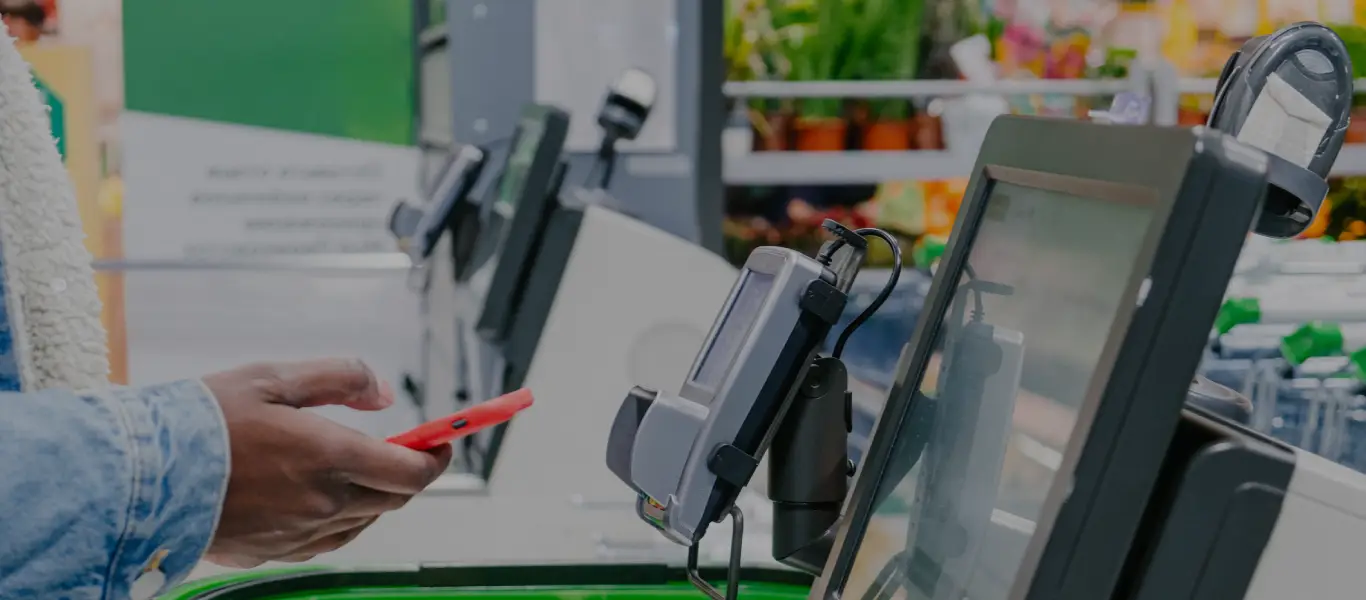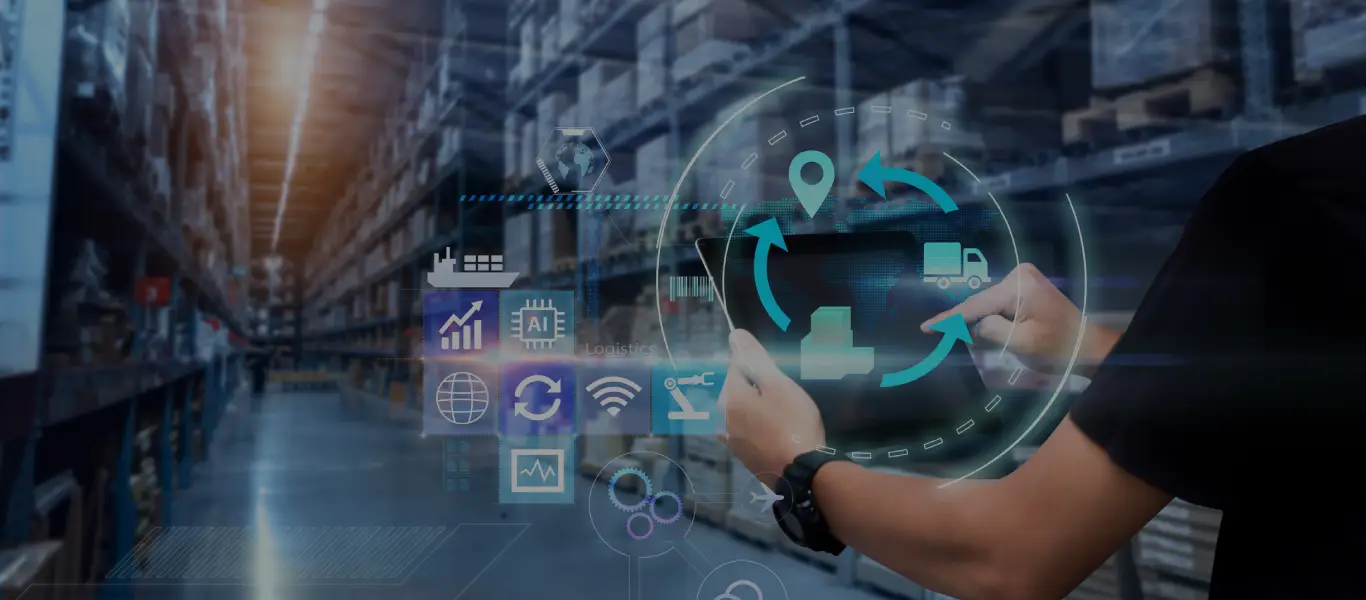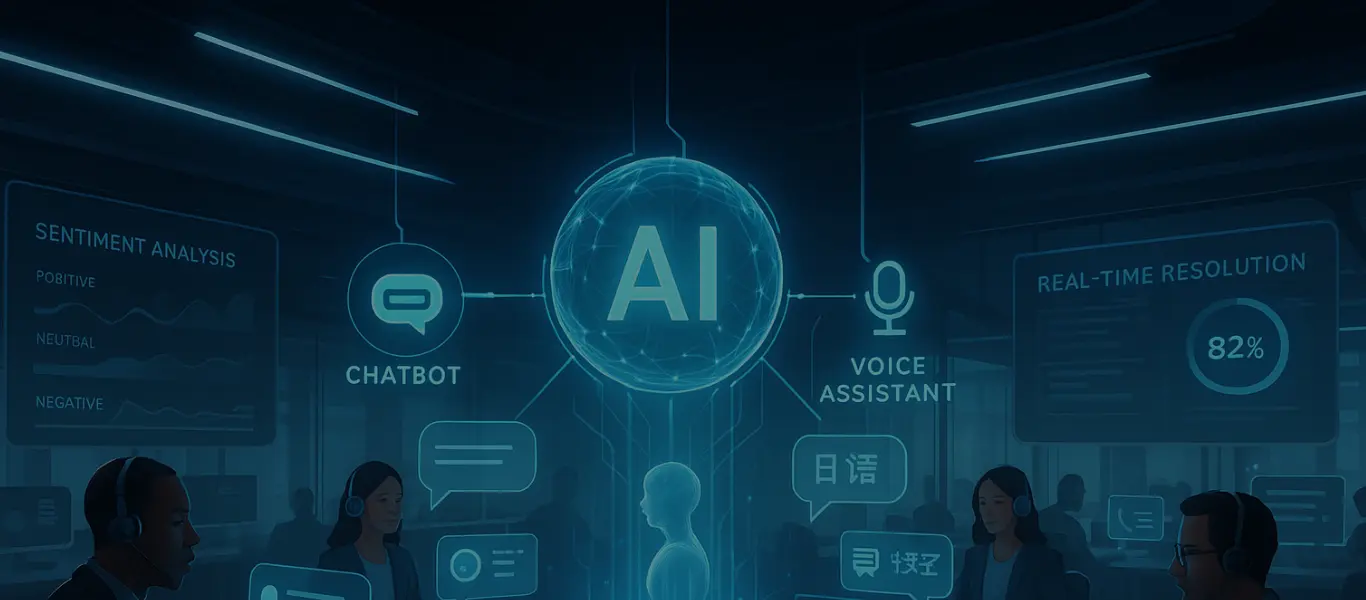In today’s dynamic retail world, every quarter brings new shifts in customer behavior, technology, and market dynamics. Whether it’s changing expectations around convenience, the rise of AI-driven personalization, or the push for more sustainable practices, retailers must adapt quickly to stay relevant.
One of the most critical enablers of this transformation is omnichannel retailing. Once dismissed as a buzzword, it is now the engine behind retail success. As McKinsey notes, “consumers will choose retailers based on the ease and richness of their end-to-end experience.” In this article, we explore the proven strategies and success stories that show how retailers can win with omnichannel.
Omnichannel Defined: Beyond the Buzzword
Omnichannel retailing is a customer-first strategy that unifies all retail channels: both physical and digital, to deliver a seamless and consistent shopping experience across all touchpoints.
In today’s digital world, customers do not limit themselves to a single channel. They move between digital and physical environments based on convenience. Retailers must understand this behavior and address it by offering unified experiences. Unlike multichannel retailing, where channels operate separately, omnichannel retailing integrates them into one cohesive system.
In multichannel retailing, a customer may face difficulty completing a purchase across channels, for example, buying online but being unable to return the product in-store. This disconnect is resolved through omnichannel strategies, where customers can start their journey on one platform and complete it on another without interruption.
The figure below illustrates the key differences between multichannel and omnichannel retailing, highlighting how omnichannel strategies create a more cohesive and customer-centric experience.
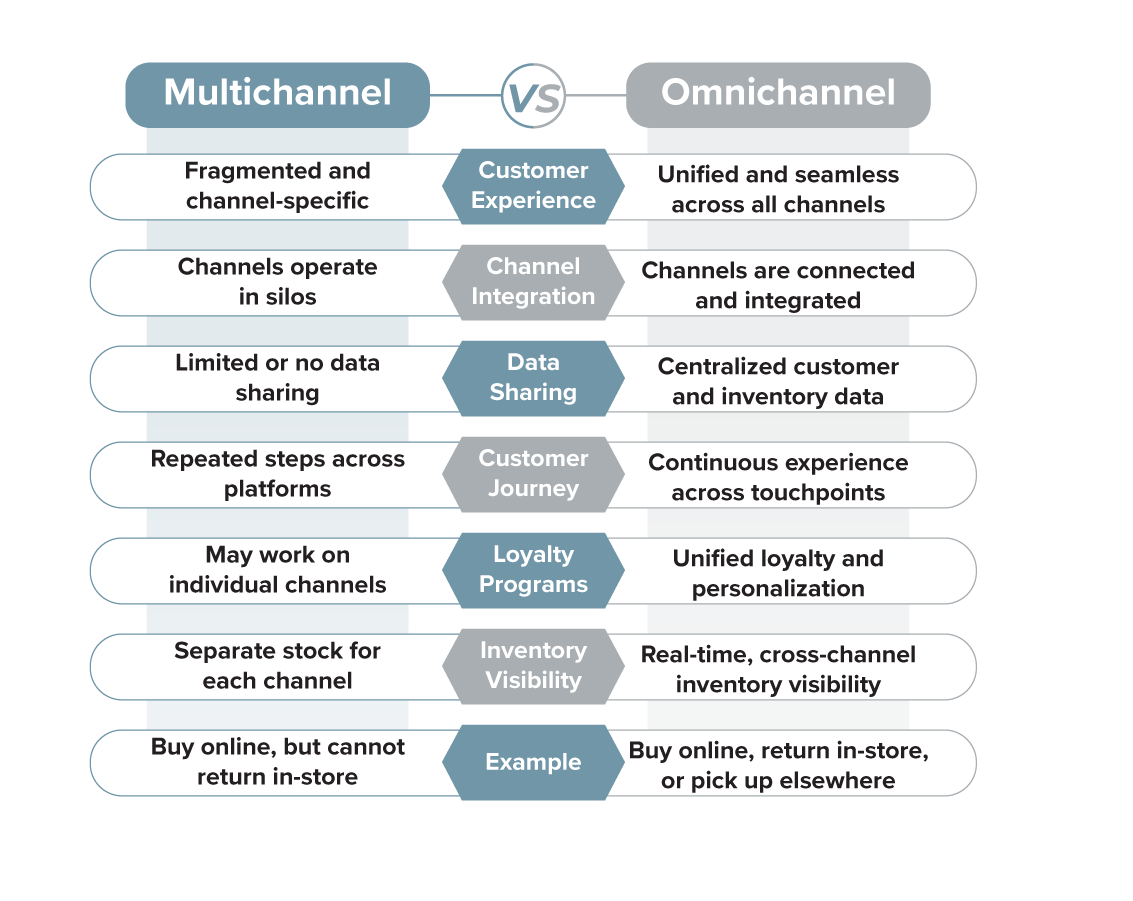
omnicanal: Meeting Rising Customer Expectations
Customers today expect a seamless experience across all channels, whether in-store, online, on mobile apps, over the phone, or through social media. They want the flexibility to inquire, browse, purchase, and return products anytime, anywhere, without disruptions.
This demand for consistency and transparency is also reflected in research, as shown below.
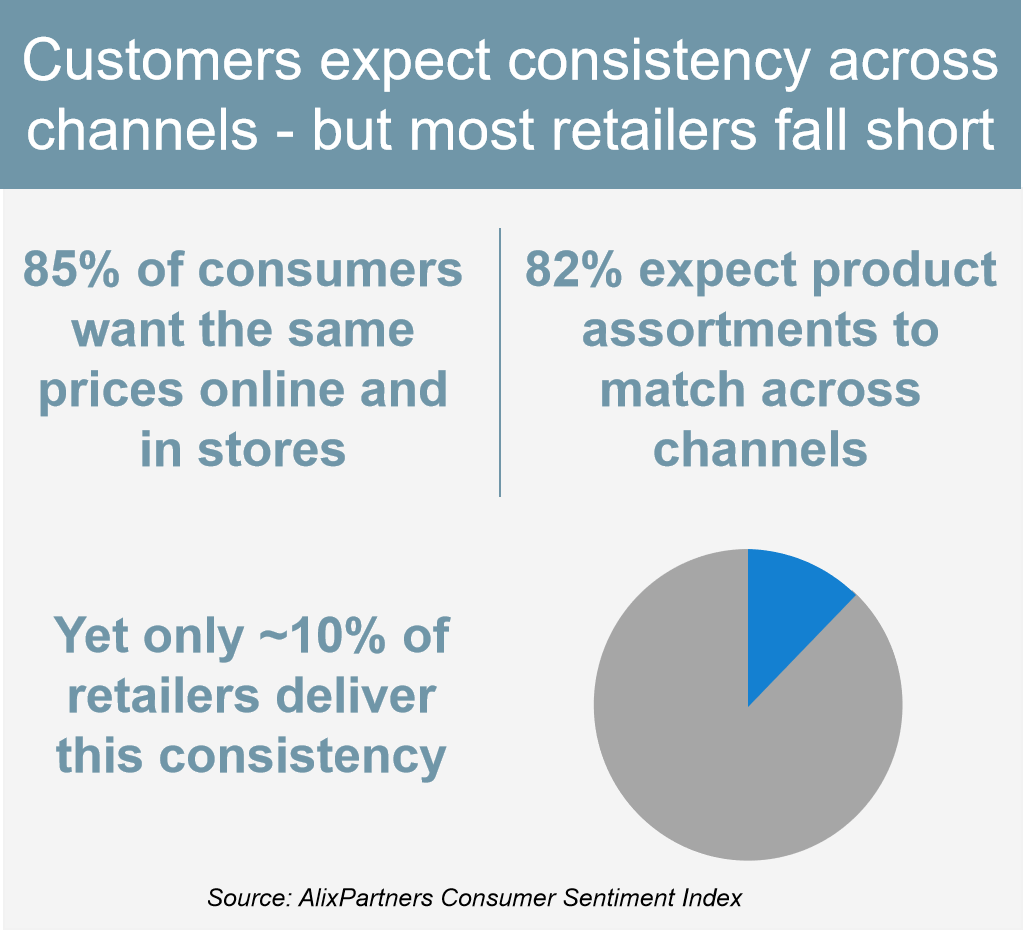
Meeting these expectations requires an omnichannel approach. Retailers that fail to adapt risk losing customers to competitors who deliver more integrated, convenient experiences.
Omnichannel strategies also enable better data management. When customer and inventory data are unified, retailers can personalize experiences, improve operations, and deliver value consistently. Adopting the latest trends in omnichannel retail is no longer a luxury; it’s critical for staying relevant and building long-term customer relationships.
Trends Driving Omnichannel Success
Omnichannel trends are emerging technologies and strategies that help retailers deliver a consistent customer experience across all platforms. These trends are designed to eliminate gaps between physical and digital channels, enhancing brand visibility and meeting customer expectations across all touchpoints.
They also reflect a business’s position in the industry and how well it adapts to evolving customer needs.
How Do These Trends Support Omnichannel Success?
Key trends shaping 2026 include:
- Unified commerce systems synchronize inventory and customer data across all channels.
- Loyalty programs ensure customer engagement regardless of where they shop.
- Click-and-collect services enable online shopping with in-store pickup, blending digital and physical experiences.
- AI-powered personalization helps tailor the shopping journey based on user behavior.
- Mobile-first strategies enhance the experience for users shopping through smartphones.
These trends ensure a smooth customer journey by allowing transitions between platforms without losing context or data.
Lessons That Shaped Today’s Omnichannel Playbook
Gone are the days when online orders couldn’t be modified in-store or had to be placed again offline. Omnichannel retailing created a unified environment where customers no longer worry about where they started their shopping journey. Their shopping carts and orders are accessible and manageable across all platforms.
This shift from multichannel to omnichannel was driven by changing customer behavior and the adoption of new technologies and strategies. Some notable trends that shaped omnichannel include:
- Omnichannel Fulfillment – Enabled real-time inventory visibility and flexible delivery and return options.
- AI-Driven Personalization – Provided tailored experiences based on individual preferences.
- Chatbots and Virtual Assistants – Improved customer support through automation and 24/7 availability.
- Mobile-First Strategies – Recognized the dominance of mobile commerce and optimized the experience accordingly.
Omnichannel retailing became a defining factor in how brands engaged customers across physical and digital touchpoints. Several retailers stood out by adopting integrated strategies that improved customer experience and business performance.
Omnichannel in Action: Success Stories from Leading Retailers
Leading retailers that adopted integrated strategies are already seeing measurable improvements in both customer experience and business performance.
- Grupo Axo / ULTA Beauty (Mexico)
Partnering with SkillNet, Grupo Axo launched ULTA Beauty in Mexico with Oracle Xstore and Oracle Customer Engagement. The new technology foundation delivers seamless customer experiences and supports the company’s broader omnichannel transformation.
- Canadian Retailer
SkillNet implemented Oracle Retail Xstore and integrated it with Oracle Cloud Infrastructure, enabling scalable omnichannel operations while meeting strict regulatory requirements.
- Global Specialty Retailer
With SkillNet’s accelerators, this retailer modernized order management and supported rapid global expansion. The solution unified commerce across markets and gave customers flexible fulfillment options
Looking Ahead: Omnichannel in 2026
As McKinsey notes, “consumers will choose retailers based on the ease and richness of their end-to-end experience.” That expectation sets the agenda for 2026, a year where execution – not aspiration – will separate retail leaders from laggards.
Building on the momentum of the past years, retailers in 2026 must continue evolving their omnichannel strategies to meet rising customer expectations and market competition. The following strategies are key to driving growth and resilience in 2026:
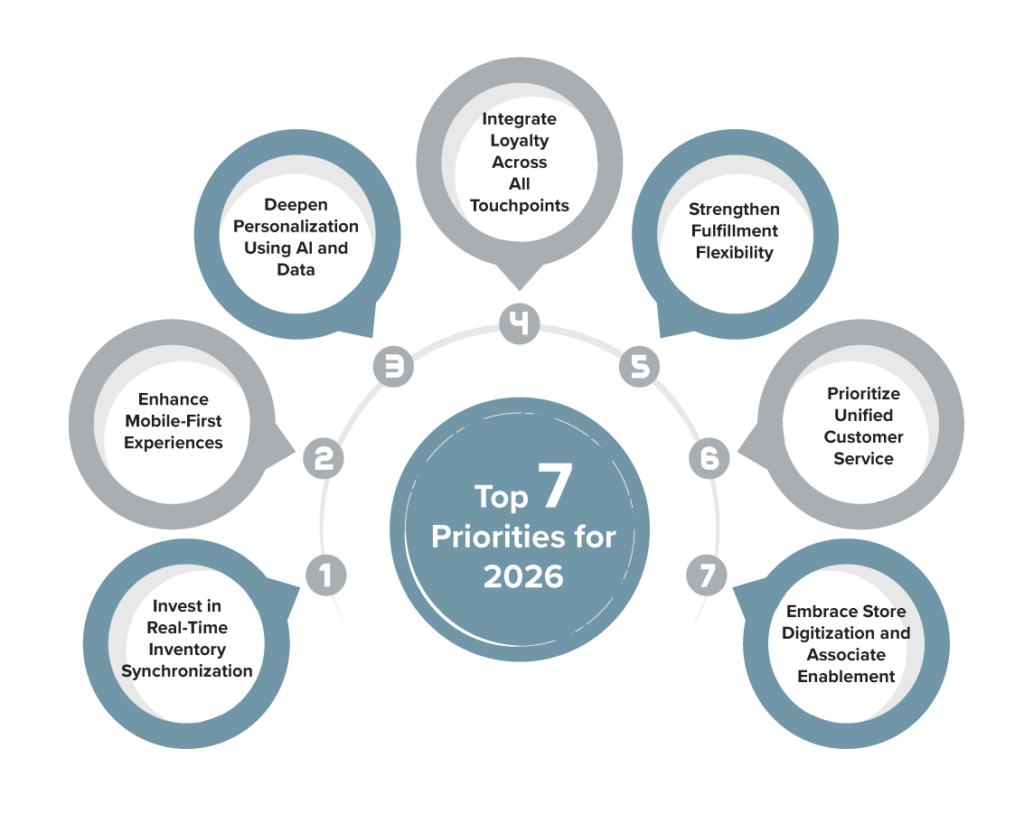
1. Invest in Real-Time Inventory Synchronization
Customers now expect accurate stock visibility across all channels. Retailers should prioritize upgrading systems that ensure real-time synchronization between online and in-store inventory to support services like BOPIS (Buy Online, Pick Up In-Store), same-day delivery, and store fulfillment.
2. Enhance Mobile-First Experiences
Mobile remains a critical touchpoint for product discovery, payments, and loyalty engagement. Retailers should further optimize mobile apps with features such as barcode scanning, virtual try-ons, personalized content, and seamless checkout to boost engagement and conversions.
3. Deepen Personalization Using AI and Data
Leveraging AI and machine learning to personalize offers, product recommendations, and service interactions across all channels can drive customer loyalty. In 2026, successful retailers will move beyond basic segmentation to real-time, behavior-based personalization.
4. Integrate Loyalty Across All Touchpoints
Customers expect recognition and reward no matter how they shop. Unified loyalty programs that work seamlessly across web, app, and stores – and even extend to marketplaces or third-party platforms will be essential for retention.
5. Strengthen Fulfillment Flexibility
Faster, more flexible fulfillment options are becoming the norm. Retailers should expand ship-from-store, curbside pickup, local delivery, and third-party logistics partnerships to meet evolving customer demands efficiently.
6. Prioritize Unified Customer Service
Customer service should reflect the same omnichannel mindset as sales. Integrated CRM systems, chatbot assistants, and support teams that have access to full customer histories across all platforms will be critical to providing consistent, high-quality service.
7. Embrace Store Digitization and Associate Enablement
Stores are becoming digital hubs. In 2026, retailers should equip store associates with tools like clienteling apps, real-time product data, and mobile checkout devices to serve customers more effectively and enhance the in-store experience.
Final Takeaway: Ready to Win with Omnichannel?
Omnichannel retailing unifies all channels to deliver seamless and personalized experiences. Unlike fragmented multichannel setups, it allows customers to start and finish their journeys anywhere—store, web, or app.
To build your omnichannel strategy:
- Map customer journeys.
- Centralize your data.
- Enable flexible fulfillment.
- Equip staff with mobile tools.
Oracle Xstore is built for this. It connects experiences, empowers associates, and scales globally. Its advanced Mobile POS empowers associates to assist customers anywhere, from assisted selling to faster checkout, while unified commerce, real-time inventory, and cross-channel fulfillment ensure seamless journeys across every touchpoint. Together, these capabilities deliver smooth customer experiences while maximizing associate effectiveness.
In short, it delivers what today’s omnichannel shoppers expect: speed, flexibility, and personalization.
For 2026 and beyond, choose Oracle Xstore to power your omnichannel success.
Ready to Turn Omnichannel into a Growth Engine?
At SkillNet, we believe that delaying omnichannel modernization is riskier than moving too fast. With Oracle Xstore and accelerators like StoreHub and Commerce DevOps, we help retailers unify channels, enable real-time inventory, and empower associates without disrupting day-to-day operations.
Let’s build the growth strategies that will keep your business ahead in 2026 and beyond.
Read more:
Refrences
https://www.alixpartners.com/newsroom/consumer-sentiment-index-2024






 Engenharia
Engenharia
